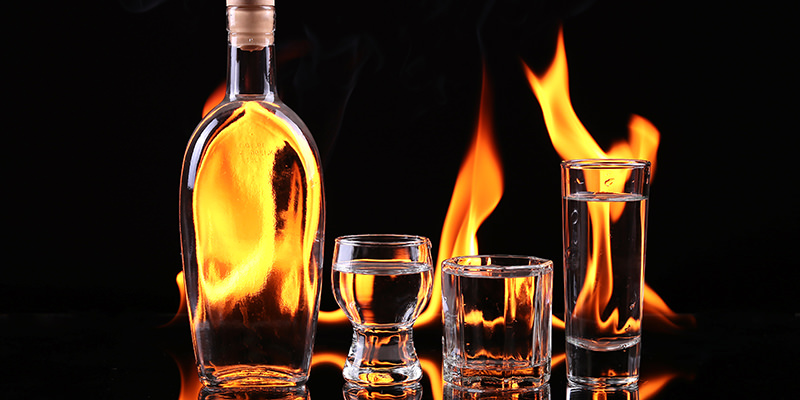You know the sight, or maybe you’ve been the sight: slapping a bar top after slamming back a shot of rotgut. Possibly making a sound like “ya-haaaaaaaa.” That’s what we in the industry call “feelin’ the burn.”
Even with higher quality spirits, alcohol—we should say ethanol alcohol—can impart a burning impression (she says while sipping on some $89 rum, which does, in fact, burn a bit). Wine, too, though that burn is lost in the general sauce of acidity, tannin, fruit, swirling, etc. But it’s there. Next time you take a sip of Cabernet, notice the subtle warmth that starts to bloom just as you begin to detect notes of blackcurrant, bulky tannins, and possible overpricing.
One of the benefits of “growing up,” in so far as the Recession-strapped generation can grow up, is being able to afford slightly more complex and rewarding alcohol delivery systems. And when we’re drinking those higher quality, heavier-bodied and more structured spirits and wines, the burn doesn’t tend to be the star of the show. But let’s not forget our $10 budget-or-bust years, when booze was more “heat” than “flavor,” a fiery screech to be drowned out with as much Sour Mix, OJ, or Diet Coke as possible (and may those grim days rest in peace).
But no matter what’s in our respective cups, there’s still a burn. With Scotch, bourbon, and mezcal—really with any well-made spirit or wine—it tends to be highly complimentary. But it’s also kind of a mystery. Wherefore the burn? Why does alcohol impart that mysterious warmth (or fire-scorch) to your tongue, throat, and, eventually, tummy?
The answers are as grimly scientific as a pamphlet on global warming. (And reading about it while drinking, by the way, is like hearing about the causes of global warming while driving to Las Vegas in a caravan of Hummers.) Alcohol, especially in high concentrations, will irritate the oral mucosa (we don’t like saying it as much as you don’t like reading it, but it’s just the mucous membrane lining the inside of your mouth). That irritation can come across as a burning sensation, the same kind of thing that happens with capsaicin (found in varying concentrations in hot, and very hot, peppers).
Alcohol’s also a solvent, absorbing some of the moisture from that (sorry) mucosa and causing a drying sensation that can also present itself as a burning feeling. But that only covers the mouth and throat—the heat that spikes the roof of your mouth and back of your gullet as some bourbon slips down into the esophagus. What about the warm feeling that (temporarily) graces your stomach once the alcohol makes its way down? That has to do with blood vessel dilation. Alcohol, in moderation, can dilate blood vessels (and, in overconsumption, can cause those blood vessels to dilate permanently, i.e., hello spider veins). Dilated blood vessels impart a temporary feeling of warmth.
The reason you feel “the burn” more with spirits than wine or beer especially is due entirely to alcohol concentrations. Strong beers might clock in at upwards of 11%, and big wines might leap into the 15 or 16%ABV range, but spirits tend to start at 40%ABV and go from there. The more alcohol present, the greater the burn.
Not to de-romanticize the burn. The burn will always have its romance, and “I dare ya” one-upsmanship (again, kind of like hot peppers). It’s just better to understand the burn, and engage it moderately, ideally with some water nearby. If nothing else, for the sake of your mucous membranes. (Sorry.)

